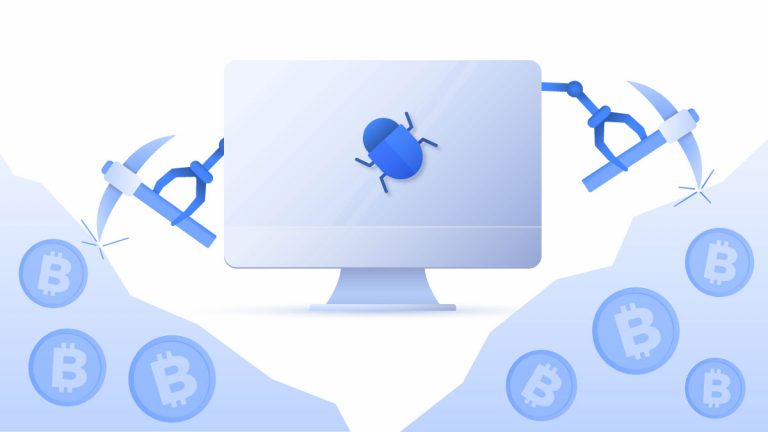2019-2-19 00:41 |
A Miners Frosty Winter – How To Survive The Bearish Market As A Crypto Miner
If the cryptocurrency marketplace hasn't been a merry and optimistic one for the average cryptocurrency investor, spare some thought for what the outlook is for the average crypto miner out there, especially for mining companies that deal with this on a larger scale.
The bearish market has resulted in a dramatic fall in the average price of cryptos, and as a result, the profitability of actually venturing to extract these cryptos goes into negative equity, forcing miners into a ‘Sophie's Choice' scenario between continuing to mine at a loss or break-even, or shut down until the market is in a better place.
One of the other solutions that there is to move operations to a place where electricity runs at cheap costs or can be found in a surplus and haggle providers down to competitive prices. And when this situation is not otherwise present to miners, the alternative is to switch out their software to a more energy-efficient setup, sometimes to the detriment of their energy to hash ratio, or mine the most profitable crypto out there.
The latter, while seeming to be pretty straight forward, has a lot more asterisks attached to it than we like to think: This often requires a deep consideration for fees associated with mining pools, the cost of electricity, optimizing the mining potential of your setup, and that's not even going into the prospect of whether your mining setup can mine these coins well enough.
Mining During A Winter – Finding The Right CoinsWhen miners are resolved to find alternative coins to mind in the face of diminishing returns from an original quarry, miners ought to take advantage of one of the popular calculator pages available for tallying up all of the expenditures when considering making a coin swap.
Some of the more widely known and used sites include the likes of CoinWarz, CoinCalculators, and WhatToMine, which have a number of metrics and tools in order to effectively calculate the most lucrative coins to jump on.
Mining pools that allow miners to extract multiple coins and then participate in automatic exchanges, referred to as multiple algorithm (Multi-Algo) pools are also a popular alternative and should be considered too. Some of the more commonly used ecosystems for this include – Mining Pool Hub, BlockMasters, ZergPool and ZPool.
Along with considering these mining ‘Candidates,' miners should test out the Minerstat platform, which is a mining calculator for making a note of all the estimated earnings and outgoings from mining specific coins or using multi-algo mining pools out there. MinterStat is used in a similar capacity as other calculators are used by miners.
This platform will allow you to find out the most profitable coin to target and, as a result, help you weather the proverbial cryptocurrency storm.
Now That You've Done The Maths – Here's How To Finally DecideWhen considering the Coins you think would be the better alternative, here are some of the questions you should ask before making the switch:
What is the coins current market volume? Including high buying and low selling positions? What is the underlying market capitalization for the coin? And how has it changed in the last few weeks? What wallet will you be using when mining and extracting these coins? What kind of fees are associated with using this wallet for mining? What pool will be used to mine, and what are the fees attached to it? Is this a tried and tested pool? Has it proven to be stable over time? What kind of payment method does this pool use? What kind of threshold for payout does this pool have? If you intend to sell these coins that you'll mine, where wil you be selling them? And what are the associated fees? Are there any exchanges that currently trade in this kind of coin? What kind of fees do these exchanges have?
Alternatively, if you've decided to go after a Multi-Algo pool as opposed to targetting a single coin, here are some questions to consider:
If you will be auto-exchanging, which coin will you be exchanging for? How many miners currently use this mining pool? Is the pool proven to be well trusted? Are payments to miners using it regularly? Has this mining pool proven to be stable over a longer span of time? What kind of payment method does this mining pool use? Is there a specific payment threshold for this pool? And if so, what is it? What are the associated fees?One of the other questions that a miner should consider is what your current hash rate is? And how many rigs or mining machines that are built with ASIC do you have in order to back up that hash?
This is a critical question that needs to be answered because the lower the hash rate that a miner has, the more of a challenge you'll have as a miner, and the harder it will be in order to reach your payout threshold. Hypothetically, if your threshold within the pool is whenever you extract 0.001 BTC, you would need to calculate how long it would take your current setup to extract that much. Best way to do this is by using one of the previously mentioned calculators.
If you mine in roughly 10 differing mining pools, and need to obtain 0.001 Bitcoin in each of them in order to obtain a payout, it will take you far longer than it would dedicate these pieces of hardware to just two pools.
If you are able to answer all of the questions previously mentioned, you will have a far greater understanding of the kind of coins to extract, what the best mining pools are for extracting them, as well as the best sorts of wallets and exchanges to use in order to turn a profit.
We do have to bear in mind, however, that it isn't just a case of looking up hundreds of different variations on what you have already. Sometimes it's the most simple solutions that can prove the best kinds.
Thinking About The Software – For MiningLast, but certainly not least, any miner needs to take into consideration the kind of software you will need to mine within your chosen pools, and for what kind of crypto. Bear in mind that the more coins you include in your list of quarries, the more mining software clients you will need in order to extract them effectively.
In light of this, it's far easier to use a dedicated sort of mining management and monitoring system. One that allows you to set up a wide variety of mining tools from a single dashboard, saving hours of scouring, beginning, ending and working upkeep on each of them individually.
The most important thing to bear in mind is that you should choose the kind of software solution that best fits you and the operation that you intend to run.
It's in this question of mining that those involved in the space have two choices: One being the use of a specific mining Operating System (OS), or using something more generic like Windows Mining. Since this kind of OS is based on Linux, this will actually save you a great deal of time and possible headaches from having to deal with unprecedented system updates, providing you with much more stability long-term.
Alternatively, other miners tend to prefer managing their own mining operation from a Windows desktop, allowing for flexibility in order to make a layout that feels more instinctive to the miner.
There are a lot of different systems out there for mining, and, as a result, these will often only allow for certain mining clients. This means that these can reach different heights in the way of hash rates with a varying range of setting for Undervolting, as well as Overclocking. The best kinds of miners will test out different setups, and create something that they can truly feel confident with.
Bitcoin (BTC), Ethereum (ETH), XRP (Ripple), and BCH Price Analysis Watch (Feb 18th)
origin »Global Cryptocurrency (GCC) на Currencies.ru
|
|


















